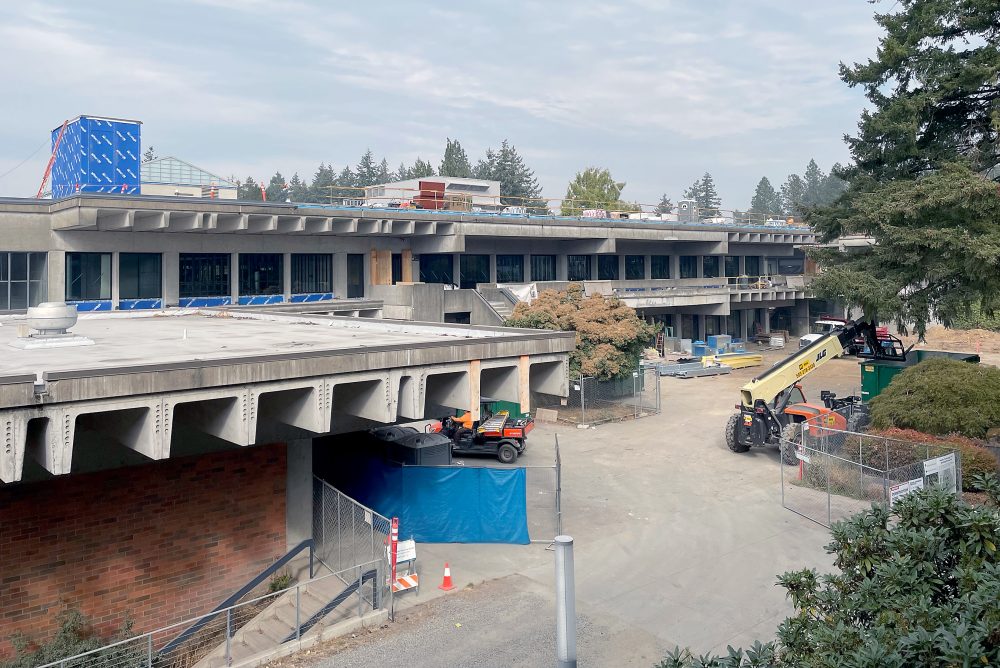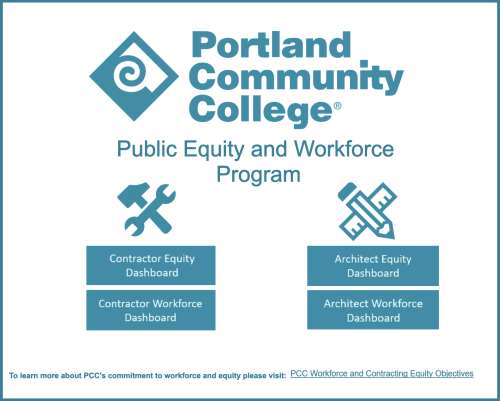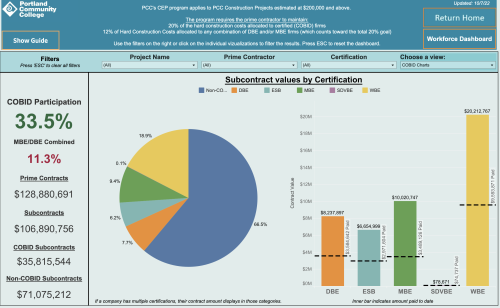This content was published: November 4, 2022. Phone numbers, email addresses, and other information may have changed.
Public dashboard highlights equitable workforce and contracting practices
Submitted article.
The Portland Community College Office of Planning & Capital Construction is working to ensure bond-funded construction projects provide equitable, inclusive job opportunities for local workers.
Historically, the construction industry has predominantly benefited white and male workers. According to the U.S. Bureau of Labor Statistics, roughly 3.9% of skilled craft worker jobs are held by women, 5% of workers are Black, and less than 2% are Asian.
For women and people of color, job site harassment and exclusionary practices limit career advancement or may prompt workers to leave skilled trade jobs entirely.
Amy James Neel, workforce and contracting equity manager, spent 12 years working at a pre-apprenticeship program to prepare diverse women for careers in the construction trades.
“I saw hundreds of women go out into high-wage, skilled construction jobs but come back to me and say, ‘I’m bullied, harassed, hazed, and marginalized; no one will train me or talk to me,” she said. “Their problem wasn’t with the work, it was the job site culture.”
As an employer of local architecture and construction firms for capital construction projects, PCC works collaboratively with workforce groups, public agencies, and businesses to increase skilled trade job opportunities for women and people of color. For contracts over $100,000, PCC aspires to meet the following workforce and contracting equity objectives –25% and 22% journeyworker and apprentice hours worked by people of color; 20% and 9% apprentice and journeyworker hours worked by women; and 20% total apprentice hours by a minority-owned contractor, respectively.
Contractors are also required to plan and implement a respectful workplace program. This ensures all employees have the opportunity to work and develop skills in their respective trade free from behaviors rooted in hostility, racism, sexism or homophobia, such as exclusion, bullying, harassment or hazing.
These objectives are tracked in real time by the PCC workforce and contracting data dashboard, a transparency and accountability tool used to understand contractor performance, address deficiencies and support contractors in meeting their equity and workforce objectives.
“We are dedicated to both workforce and contracting equity,” said James Neel. “Part of a commitment to something is measuring it…we want to be transparent about both our successes and challenges.”
Bob Maczko, PCC database coordinator, led development of the dashboard in collaboration with local workforce organizations and contractors. The year-long process involved seven iterations before the dashboard launched to the public.
“There were a lot of challenges in terms of how to display this data in a way that is not overwhelming,” he said. “We’re tracking all of our goals for each contractor—on every project—in one chart.”
Maczko uses color—-green for successfully meeting objectives, red for failing to meet objectives—-to help viewers understand performance at a glance. Filtering allows the public to break down data by trade, demographic, contractor location, and more. This helps all stakeholders understand what’s working well and where challenges exist.
Beyond transparency and accountability, the dashboard is a tool to help strengthen partnerships with regional contractors and advocate for collective investment in workforce training.
“We can help contractors navigate the very complex system of accessing workers, but we also know some of the deficits we’re experiencing are not a result of the contractor failing to reach out to the population we seek to elevate,” said James Neel. “The supply chain is broken, and we’re working with regional partners, apprenticeship programs, public agencies and labor to correct this historically exclusionary recruitment pipeline.”



